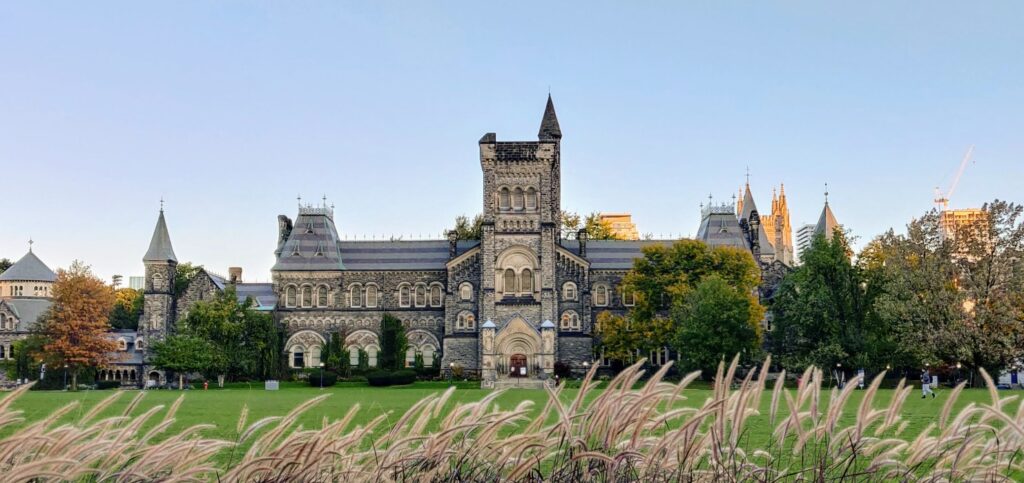Canada has long been a beacon for international students seeking high-quality education, cultural diversity, and a pathway to permanent residency. Canadian universities are known for their research excellence, diverse programs, and inclusive environments. Institutions like the University of Toronto, McGill University, and The University of British Columbia consistently rank among the top universities globally. However, recent developments have raised concerns about whether the “great Canadian education dream” is still as attainable for many.
Rising Costs and Financial Barriers
One of the most significant challenges for international students is the rising cost of education. Tuition fees for international students are substantially higher than those for domestic students (your semester fee could potentially pay for the entire degree for 5-10 local Canadian residents), and they have been increasing steadily under your nose. For instance, Concordia University has announced a 30% increase in tuition fees for out-of-province students, bringing the cost to a minimum of a staggering CAD 12,000 (over BDT 10 lac) per year (without taking dormitory facilities and living expenses into account). Similarly, the more affordable options that used to be most opted for by Bangladeshis like Memorial University of Newfoundland, have doubled(!) their tuition fees to CAD 6,000 per year for Canadian students and CAD 20,000 (BDT 17.5 lac) for international students; and the University of Manitoba implemented a 3.75% tuition increase for the 2023-2024 academic year.
Higher financial requirements make it more difficult for middle-class students to access higher education opportunities in Canada. This could limit their options and force them to consider other countries with lower financial requirements or stay within Bangladesh. For reference, the cost of obtaining a degree from a public university in Bangladesh is relatively low, ranging from USD 50 to USD 100 per semester. This means that the total cost for a four-year undergraduate program could be as low as USD 400 to USD 800.
Visa and Immigration Hurdles
- Cap on Study Permits
Obtaining a student visa and navigating the immigration process can be daunting as is, but recent policy changes have made it more challenging for international students to secure visas and work permits. The Canadian government has introduced a temporary cap on the number of study permits issued, reducing the intake by 35% for 2024. This cap aims to address the strain on housing and healthcare services caused by the rapid increase in international students.
- Doubled Proof of Funds
Additionally, the proof of funds requirement has been increased, with students now needing to show CAD 20,635 (over BDT 18 lac) in liquid funds, double of the previous CAD 10,0004. The increased requirement for liquid funds means that families would need to show a higher amount of readily available money.
For reference, the average monthly income for a middle-class family in Bangladesh ranges between Tk 70,000 and Tk 150,0001; this translates to approximately USD 820 to USD 1,760 per month. This math makes you question whether the investment in a Canadian education is even worth it to that scale.

- Tightening Canadian Institutes’ Accreditations
Furthermore, a significant court ruling in 2024 addressed inconsistencies and lack of transparency in the study permit process. The federal government identified certain institutions, particularly some private colleges, as “bad actors” for exploiting the system; they were contributing disproportionately to the spike in international student numbers without adequate support structures. These institutions were removed from the list of Designated Learning Institutions (DLIs) eligible to issue study permits due to non-compliance.
Following this scandal, there is now heightened pressure on international students to opt for more reputable universities and avoid private colleges as much as possible to secure visas whereas community colleges have been a good and affordable alternative for them. This could be a significant financial burden, as many families might not have substantial savings. These changes have created uncertainty and anxiety among prospective students.
Limited Scholarship and Financial Aid for International Students
As a student in Canada, one of the most common questions I get is where to look for full-ride scholarships for international students. This makes it obvious to me that it is not common knowledge for aspirants and their families that Canada barely offers ANY substantial scholarships to international students.
Despite its reputation for high-quality education and welcoming environment, Canada is often criticized for offering fewer scholarships and full-ride opportunities for international students compared to other popular study destinations like the United States, the United Kingdom, and Australia. While prestigious institutions such as the University of Toronto and the University of British Columbia do offer some full-ride scholarships, these opportunities are extremely limited (2 students a year) and highly competitive.
The majority of international students in Canada must rely on personal funds or loans to cover the substantial costs of tuition and living expenses.
This financial burden is particularly challenging for students from middle-class families in developing countries, who may find it difficult to afford the rising costs of education in Canada.
Many prospective students may be forced to consider alternative destinations where financial aid is more accessible and abundant.
Employment and Post-Graduation Opportunities
While Canada offers a Post-Graduation Work Permit (PGWP) that allows international students to work in Canada for up to three years after completing their studies, securing employment can be challenging.
The job market is competitive, and many employers prefer candidates with Canadian work experience.
This means that the majority of Bangladeshi students coming for Masters with years of work experience too must start from scratch.
Additionally, the COVID-19 pandemic has disrupted the job market, making it even harder for recent graduates to find employment. Certain sectors, such as retail, accommodation, and food services, were hit hardest by the pandemic. These sectors are still recovering, while others like technology and healthcare have seen growth. This shift has also influenced job availability and the types of skills in demand. As of September 2024, the unemployment rate is 6.6%, the highest since 2017 outside of the pandemic.
The ability to work in Canada post-graduation is a significant factor in the decision to study in Canada. To support international students affected by the pandemic, the Canadian government introduced policies allowing former PGWP holders to apply for an additional open work permit valid for 18 months. Despite these measures, students on PGWP have faced challenges such as securing full-time employment and navigating the job market during economic uncertainty.
French Language Domination
Language policies in Canada also play a significant role in shaping the experience of international students. The federal government has been working to bolster the French language across the country, recognizing its decline outside the state of Quebec. For international students, especially those studying in Quebec or other francophone regions, proficiency in French can be a crucial factor in their academic and professional success.

Impact of Rising Number of Asylum Seekers
Canada has seen a significant increase in the number of asylum seekers, which has put additional pressure on housing and social services, and added to the workload of Immigration, Refugees and Citizenship Canada (IRCC), leading to longer processing times for all types of immigration applications, including those from international students.
By 2023, there were nearly 2.7 million immigration applications in IRCC’s inventory, causing substantial backlogs in the timely processing of PR applications for international students. Catering to the immediate needs of asylum seekers, such as housing and work permits, has diverted resources from other immigration streams, including PR applications for international students. This influx contributes to increasing competition for affordable housing and access to community resources for international students.
For a one-bedroom apartment, students in Toronto can expect to pay around CAD 1,527 to CAD 1,538 per month. In Vancouver, the cost is higher, ranging from CAD 2,000 to CAD 2,800 per month. In cities like Ottawa, the rent ranges from CAD 1,200 to CAD 1,800 and CAD 1,110 to CAD 1,473 per month in Montreal. If we convert it into Bangladeshi Taka (BDT) monthly rent without other living expenses for big cities like Toronto ranges around 1 lac 20 thousand taka and for Vancouver, 2 lac taka per month.

Rising Islamophobia and Hatred Against South Asians
Recent reports indicate a troubling rise in Islamophobia and hatred against Indians in Canada. A Senate report highlighted that incidents of hate and violence against Muslims are increasing. Similarly, there has been a rise in hate speech and attacks against South Asian and Sikh Canadians. These incidents create an unwelcoming environment for international students from these communities, adding another layer of difficulty to their experience in Canada.
Deportation of Indian Students
The deportation of over 700 Indian students in 2023 due to fraudulent admission letters has left a lasting scar on the Canadian international student community. Many of these students were victims of unscrupulous immigration agents in India who provided fake documents without their knowledge. The incident has heightened fears and uncertainties among prospective students about the integrity of the immigration process and their future in Canada.
Conclusion: To Go or Not To?
So, is the great Canadian education dream over for international students?
The answer, I’m afraid, is nuanced.
While there are significant challenges, including rising costs, visa hurdles, and a competitive job market, Canada still offers high-quality education and potential pathways to permanent residency. For many students, the dream is still very much alive, but it requires years of careful planning, financial preparation, and resilience. As Canada continues to adapt its policies and support systems, the hope is that the student community too will modify themselves; that the intrinsic ambition remains to aspire for a higher quality of life wherever it is feasible and not just landing in Canada.







